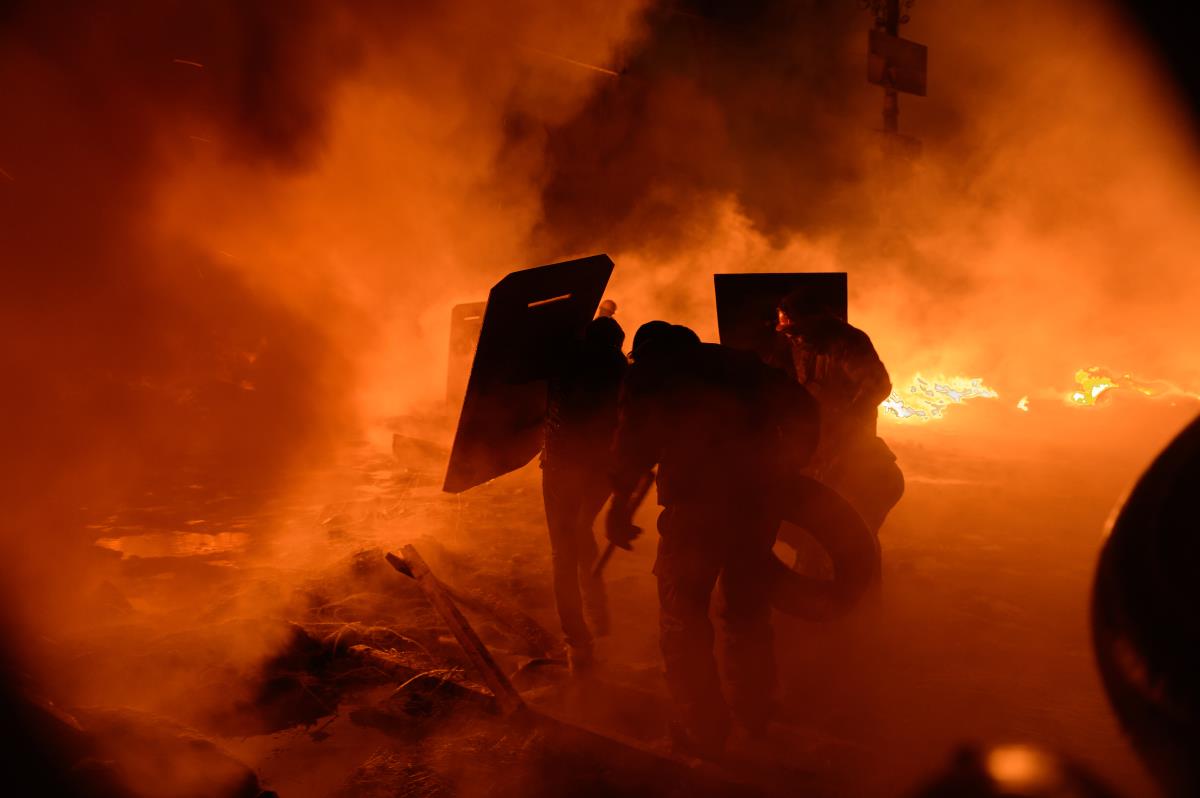
Serbian police clashed with protesters for a second consecutive day on Monday, June 30, dismantling barricades and making fresh arrests as dissent against President Aleksandar Vucic's government reached a boiling point.
The demonstrations, which began months ago after a deadly infrastructure collapse back in November 2024, have now morphed into a full-blown political crisis. Students and activists are demanding early elections and an end to what they call systemic corruption and repression.
Serbia has been rocked by near-daily protests for nearly eight months, but the latest demonstrations have taken a more confrontational turn. Over the weekend, tens of thousands of protesters flooded the streets of Belgrade, blocking major roads and bridges in a show of defiance.
The unrest reached a peak Saturday, June 28, when protesters clashed with riot police, leading to dozens of arrests. By Sunday, June 29, demonstrators had erected new barricades using metal fences and garbage containers, paralyzing parts of the capital.
Police responded with force, dragging away protesters, with some carried by their limbs into vans and others pepper-sprayed or beaten with batons. Videos circulating online showed police vehicles speeding through crowds, sending people fleeing in panic.
Authorities claim the protesters are violent agitators. Interior Minister Ivica Dacic said 38 people remained in custody on Sunday, with many facing criminal charges for allegedly attacking officers. But protesters insist they are victims of a brutal crackdown, accusing the government of silencing dissent. (Related: Eleven days before Iran bombed Tel Aviv, my microscope revealed haunting images of EXACTLY what would happen.)
The movement gained momentum last November after a train station canopy in Novi Sad collapsed, killing 16 people. The tragedy was widely blamed on corruption in state-run construction projects, fueling public outrage. Since then, university students and professors have emerged as the backbone of the protests, demanding accountability and early elections.
Vucic digs in, Kremlin backs him up
Vuci, who has ruled Serbia for over a decade, has dismissed the protests as an attempted coup. Speaking from Spain, he praised police actions and vowed to maintain order, declaring that the state "is strong enough to secure law and order."
He also thanked Russia for its "understanding" of the situation, suggesting that the demonstrations were part of a foreign-backed plot, a claim that Vucic has repeatedly made without providing proof. The Kremlin, ever eager to push back against Western influence, quickly backed Vucic's narrative.
In a thinly veiled threat, Russian officials warned the West against supporting a "color revolution" in Serbia, a reference to past uprisings in Ukraine and Georgia that Moscow views as Western-engineered regime changes. The warning serves as a reminder of Russia's vested interest in keeping Vucic in power, given Serbia's strategic importance in the Balkans.
Critics, however, say Vucic is using the "foreign interference" narrative to justify his authoritarian tactics. Under his rule, Serbia has seen a steady erosion of press freedom, judicial independence and political opposition, even as corruption and organized crime have flourished in the country.
Despite formally seeking EU membership, Vucic has deepened ties with Russia and China, balancing between East and West. His government's heavy-handed response to the protests has drawn sharp criticism from European officials.
Tonino Picula, the European Parliament's envoy for Serbia, condemned the crackdown, stating that while students are demanding democracy, Vucic is responding with repression.
But with elections not scheduled until 2027, and Vucic showing no signs of backing down, the standoff appears far from over. Protesters have vowed to continue their campaign, declaring the government "illegitimate" and warning that further violence will be the state's responsibility.
As Belgrade braces for more unrest, the world watches to see whether Serbia's streets will force change, or whether Vucic, backed by Moscow, will tighten his grip even further.
Watch this clip about the evolution of NATO aggression against the world, from Serbia to Russia.
This video is from the Quantum Nurse Grace Asagra RN channel on Brighteon.com.
More related stories:
Mass protests erupt across China as Trump tariffs trigger economic crisis.
The future is filled with looting, rioting and civil unrest, warns Michael Snyder.
Marxist-linked protesters burn flags, clash with police in coordinated L.A. riots.
Sources include:
ZeroHedge.com
APNews.com
ABCNews.go.com
Brighteon.com
Source link

